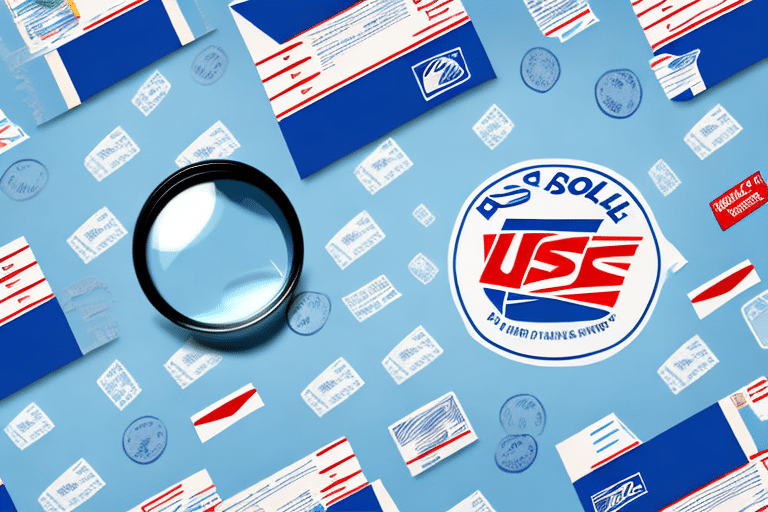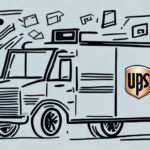Understanding USPS Insurance: Coverage and Limitations
When shipping with the United States Postal Service (USPS), opting for insurance can provide valuable protection for your packages. USPS insurance covers loss, damage, or missing contents of a package. However, it's important to be aware of its limitations:
- Exclusions: Damage or loss caused by inadequate packaging, ordinary wear and tear, or delays in delivery are not covered.
- Coverage Limits: The maximum coverage amount depends on the type of mail used and the declared value of the package. For example, Priority Mail offers up to $5,000 in coverage.
- Not Automatically Included: USPS insurance must be added at the time of purchase, and the cost is based on the declared value of the package.
Unlike shipping insurance offered by private carriers such as UPS or FedEx, USPS insurance is more cost-effective but may offer less comprehensive coverage. It's essential to declare the accurate value of your package, as under-declaring can result in lower compensation in case of a claim.
Comparing USPS Insurance with Private Carriers
Choosing between USPS insurance and insurance from private carriers like UPS or FedEx depends on your specific needs and budget. Here's a comparison to help you decide:
| Feature | USPS Insurance | Private Carrier Insurance |
|---|---|---|
| Cost | Generally lower for packages with lower declared values. | Higher premiums, especially for comprehensive coverage. |
| Coverage Amount | Up to $5,000 for domestic Priority Mail. | Can offer higher coverage limits, often exceeding $10,000. |
| Additional Services | Basic tracking and limited additional services. | Features like real-time tracking, signature confirmation, and expedited claims processing. |
| Eligibility | Excludes certain items like perishable goods and live animals. | Varies by carrier; some offer broader eligibility. |
For detailed comparisons, refer to industry reports such as the UPS Annual Shipping Report or studies by the FedEx Shipping Insights.
Calculating the Cost of USPS Insurance
The cost of USPS insurance is primarily determined by the declared value of your package and the type of mail service you select. Here's how to calculate it:
- Determine the Declared Value: Accurately assess the value of the items you are shipping.
- Select the Mail Type: Different services like Priority Mail or First-Class Mail have varying insurance rates.
- Use USPS Pricing Tools: Utilize the USPS Insurance Calculator to get an accurate cost estimate.
For example, as of 2023, insuring a Priority Mail package with a declared value of up to $100 typically costs around $5.50. This fee increases proportionally with the declared value.
Note: USPS insurance does not cover the cost of shipping itself, only the value of the package contents. Additionally, certain items like perishable goods or hazardous materials may be ineligible for insurance.
USPS Insurance Options by Mailing Service
USPS offers insurance options tailored to various mailing services. Understanding these options helps you choose the best fit for your shipping needs:
Priority Mail
Priority Mail provides expedited shipping with insurance coverage up to $5,000. It's ideal for valuable and time-sensitive packages.
First-Class Mail
First-Class Mail offers affordable shipping with insurance coverage typically up to $50. Suitable for lightweight and lower-value items.
Priority Mail Express
For overnight delivery, Priority Mail Express includes insurance coverage up to $5,000, ensuring both speed and security.
Media Mail
Designed for educational materials, Media Mail offers insurance coverage up to $5,000. It's a cost-effective option for shipping books, CDs, and other media items.
Parcel Select
Parcel Select is a ground shipping option that provides insurance coverage up to $100. It's suitable for bulkier items that are not time-sensitive.
Each mailing service has specific guidelines and coverage limits. For detailed information, visit the USPS Insurance Page.
Factors Influencing USPS Insurance Costs
Several factors influence the cost of USPS insurance beyond just the declared value and mail type:
- Destination: Shipping domestically is generally less expensive than international shipping.
- Package Size and Weight: Larger and heavier packages may incur higher insurance costs.
- Level of Coverage: Higher coverage limits increase the insurance premium.
- Additional Services: Services like delivery confirmation can affect the overall cost.
It's advisable to use the USPS Postage Calculator to get precise insurance costs based on these factors.
Keep in mind that certain items are ineligible for insurance, including perishable goods, live animals, and hazardous materials. Always verify eligibility before shipping.
How to File a USPS Insurance Claim
If your package is lost or damaged, filing a claim with USPS is straightforward:
- Gather Documentation: You'll need proof of insurance purchase, proof of the package's value, and evidence of damage or loss.
- Submit the Claim: Claims can be filed online via the USPS Claims Page or at your local post office.
- Wait for Approval: USPS will review your claim and, if approved, refund the declared value plus the cost of shipping.
Important Considerations:
- Certain items like jewelry, cash, and perishable goods may not be covered.
- There are limits on coverage amounts for specific item types.
- Investigate with your local post office and neighbors before filing a claim to potentially recover your package without formal proceedings.
For more information on the claims process, visit the USPS Claims Information.
Tips for Selecting the Right USPS Insurance Coverage
Choosing the appropriate level of insurance ensures that your package is adequately protected without incurring unnecessary costs. Consider the following tips:
- Assess Package Value: Clearly determine the monetary value of the items being shipped to decide on the necessary coverage level.
- Understand Risks: Consider the likelihood of loss or damage based on the item's nature and shipping conditions.
- Choose the Right Service: Align your insurance needs with the USPS mailing service that offers the appropriate coverage and delivery speed.
- Proper Packaging: Even with insurance, proper packaging reduces the risk of damage and potential claim denials.
For high-value items, you might also consider purchasing additional insurance from a third-party provider to cover gaps in USPS coverage.
USPS Insurance Discounts and Savings
There are several ways to reduce the cost of USPS insurance:
- Online Purchases: Purchasing insurance online can sometimes offer discounts compared to in-person transactions.
- Bundled Services: Using USPS-approved shipping software or services can provide insurance discounts. Examples include Stamps.com, ShipStation, and Endicia.
- Priority Mail Benefits: Some Priority Mail services include free insurance coverage up to a certain amount.
Always check the latest discounts and offers on the USPS official website to maximize your savings.
Note: USPS insurance covers only the item's value, not additional costs like shipping fees or taxes. Ensure you review all terms and eligibility criteria before purchasing insurance.
Debunking Common USPS Insurance Misconceptions
Understanding USPS insurance correctly helps avoid confusion and ensures proper coverage:
- Insurance is Not Automatic: Contrary to popular belief, USPS insurance is not included with all mailing services. It must be explicitly added during the shipping process.
- Cost Factors: The price of USPS insurance is based on the declared value and type of mail, not solely on the package's weight.
- Coverage Scope: Some believe USPS insurance covers all types of loss and damage, but it excludes specific scenarios like improper packaging or certain item types.
By clarifying these misconceptions, users can make more informed decisions regarding their package insurance needs.
For accurate and comprehensive information, refer to the USPS Insurance Guidelines.
Conclusion
Understanding the costs and coverage of USPS insurance is essential for safeguarding your shipments. By carefully assessing the value of your packages, understanding the limitations of USPS insurance, and comparing it with private carrier options, you can make informed decisions that align with your shipping needs and budget.
Always ensure that you correctly declare the value of your package and choose the appropriate mailing service to maximize your coverage. Remember to take advantage of available discounts and fully comprehend the claims process to streamline any potential issues.
For more detailed information and the latest updates, visit the USPS official website.






















